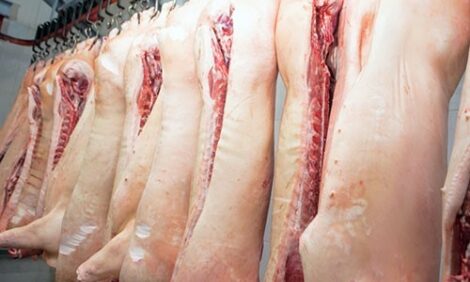



Risks Assessed of ASF Transmission from Russia to EU
EU - Overall, the risk of the introduction of the African Swine Fever (ASF) virus into EU countries is described as low and mainly associated with returning trucks but the risks are higher for Poland and Lithuania. These conclusions were reached by researchers in Madrid, Spain, who developed a model to examine the risks.The uncontrolled presence of African swine fever (ASF) in the Russian Federation poses a serious risk to the whole European Union (EU) pig industry, report Lina Mur and colleagues at the VISAVET Center and Animal Health Department at the Veterinary School of Complutense University of Madrid,
Although trade of pigs and their products has been banned since the official notification in June 2007, the researchers say the potential introduction of ASF virus may occur by other routes, which are very frequent in ASF, and more difficult to control, such as contaminated waste or infected vehicles.
Their study, published in BMC Veterinary Research, aimed to estimate the risk of ASF virus introduction into the EU through three types of transport routes: returning trucks, waste from international ships and waste from international planes, which they refer to as transport-associated routes (TAR).
Since no detailed and official information was available for these routes, a semi-quantitative model based on the weighted combination of risk factors was developed to estimate the risk of ASF virus introduction by TAR. Relative weights for combination of different risk factors as well as validation of the model results were obtained by an expert opinion elicitation.
Model results indicate that the relative risk for ASF virus introduction through TAR in most of the EU countries (16) is low, although some countries, specifically Poland and Lithuania, concentrate high levels of risk, the returning trucks route being the analyzed TAR that currently poses the highest risk for ASF virus introduction into the EU.
The spatial distribution of the risk of the introduction of ASF virus varies importantly between the analyzed introduction routes.
Results also highlight the need to increase the awareness and precautions for ASF prevention, particularly ensuring truck disinfection, to minimise the potential risk of entrance into the EU.
This study presents the first assessment of ASF introduction into the EU through TAR, say Mur and colleagues. The model they developed could be used in data scarce situations for estimating the relative risk associated to each EU country. They add that the simple methodology provides a rapid and easy to interpret results on risk that may be used for a target and cost-effective allocation of resources to prevent disease introduction.
Reference
Mur L., B. Martínez-López and J.M. Sánchez-Vizcaíno. 2012. Risk of African swine fever introduction into the European Union through transport-associated routes: returning trucks and waste from international ships and planes. BMC Veterinary Research, 8:149. doi:10.1186/1746-6148-8-149
Further ReadingYou can view the full report (as a provisional PDF) by clicking here.More information on recent ASF outbreaks is available by clicking here. |








